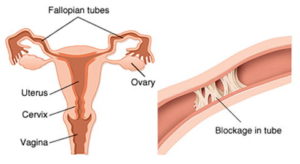Fallopian tube surgery
Fallopian tube surgery is a treatment for blocked fallopian tubes, and more information can be found on the Blocked or Damaged Fallopian Tubes page.
Apart from the usual risks which are involved with an operation there is also an increased risk of an ectopic pregnancy (pregnancy in the fallopian tube) after tubal surgery. An ectopic pregnancy will never be successful and may have to be removed along with the affected fallopian tube.
Successful surgical treatment is possible if:
- The blockage is at the uterine end of the tube, the other end (fimbrial end) being healthy. The pregnancy rate may be up to 50% at 1 year following treatment.
- The tubes have been blocked by a sterilisation procedure, although success depends on the type of sterilisation procedure used (some are easier to reverse than others). The pregnancy rate ranges from 5% to 80%.
- There is a mild degree of scar tissue around the tube but the tube is otherwise essentially healthy. The pregnancy rate is 30-50% at 1 year following treatment.
Surgery is less likely to be successful if:
- The tube is blocked at the far end (the hydrosalpinx) which is a common finding.
- The tubes have received diathermy during a sterilisation procedure.
- There is extensive scar tissue (adhesions).
Pregnancy rates are 5 to 20% at 1 year following surgical treatments of moderate and severe fallopian tube damage; find out more on our Success rates page. The overall risk of ectopic pregnancy following tubal surgery is 10%. Emergency surgery is usually required to treat an ectopic pregnancy and the affected fallopian tube may need to be removed completely. More information is available on the Ectopic Pregnancy page.
